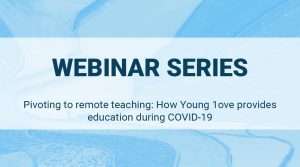In the past few months, we’ve been developing our online simulation toolkit so that faculty can digitize their public policy simulations. We checked in with Joshua Yardley about his experience using SurveyCTO to run a pandemic simulation in the “Program Evaluation and Policy Analysis” course he teaches at Brown University and the opportunities he sees for using online simulations in Massive Open Online Courses (MOOCs).
Tell us about how you structured your simulation.
I did the pandemic simulation during class with the Masters students at Brown last semester, and because the simulation itself took so long and students didn’t have much time to reflect on their experience, the debrief was short and rather shallow.
Having my undergraduate students this semester do the online simulation in advance really opened things up. And having each of the 28 students make decisions independently (rather than in groups) gave me so much more to work with in terms of the various decision/outcome paths.
“Students came into class very charged up by the exercise and ready to defend their decisions quite passionately.”
This is the first time I’ve taught a class in which I went in armed with student responses to material they engaged with pre-class, and I was really pleased with how it allowed me to surface various teaching points (for example, the value of statistical life and the role of politics) in an organic way, driven by the students. It was really cool.
Did you have any concerns about taking the simulation online?
My one concern flipping out the simulation as pre-class work was that students wouldn’t be as engaged and immersed in the experience sitting at home doing this work online versus being in class with the drama of the die rolls. But this did not seem to be the case at all. Students came into class very charged up by the exercise and ready to defend their decisions quite passionately.
How do you see online simulations being used in MOOCs?
I think online simulations such as the one we used in this course could add a lot of value in a MOOC context. The more we can get students engaging actively and meaningfully with the course content, the better. Well-designed online simulations are one way to bring an online learner into the material to help her experience the lesson rather than simply watching it.
Read more about how Harvard Kennedy School used SurveyCTO to create digital public policy simulations for a visiting executive education cohort and over 250 graduate students.




